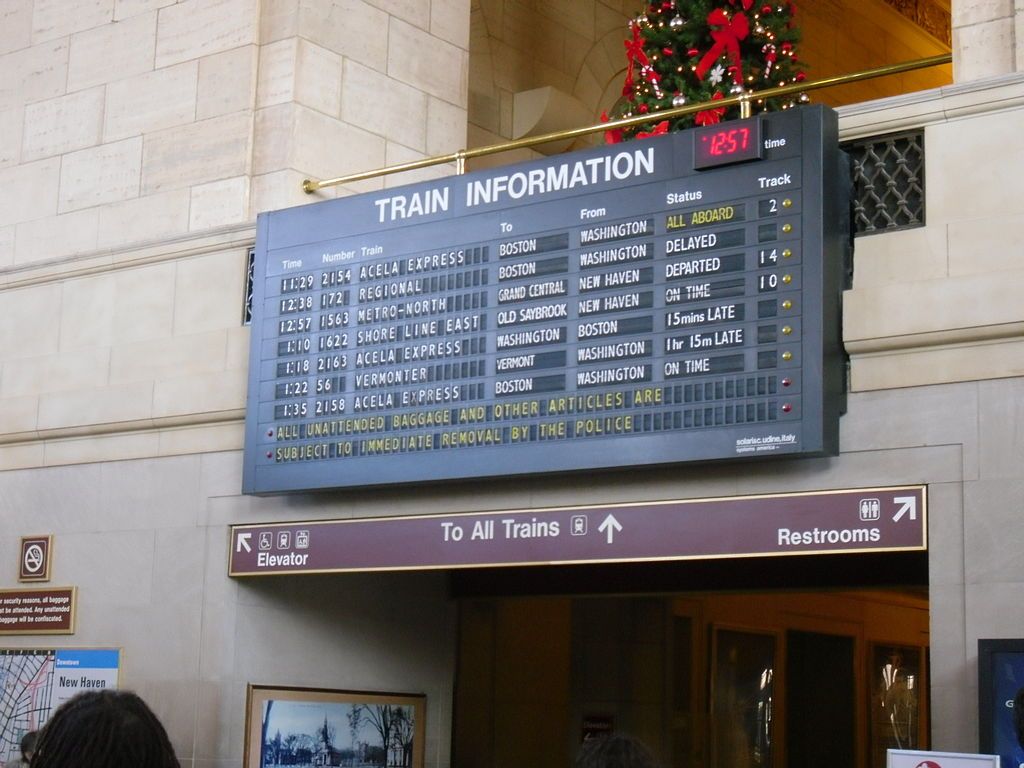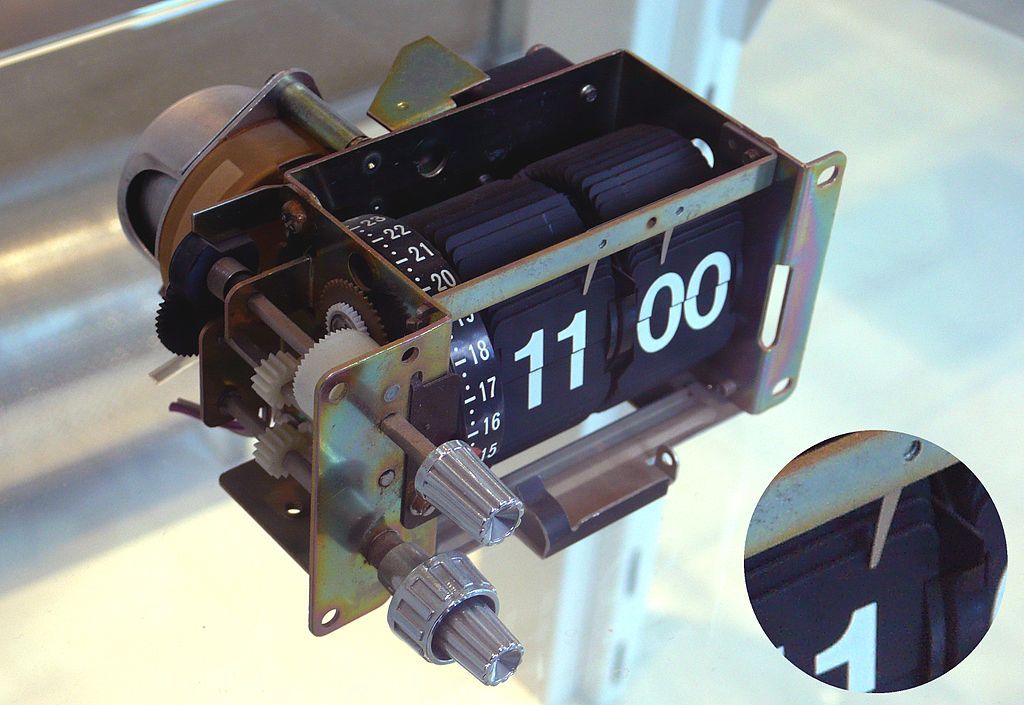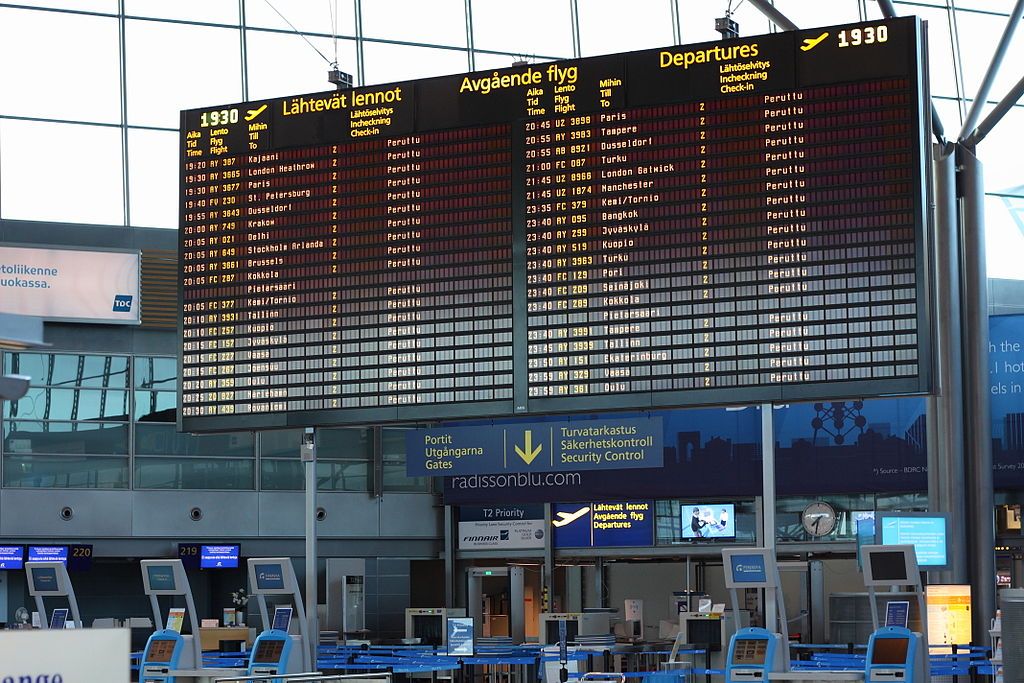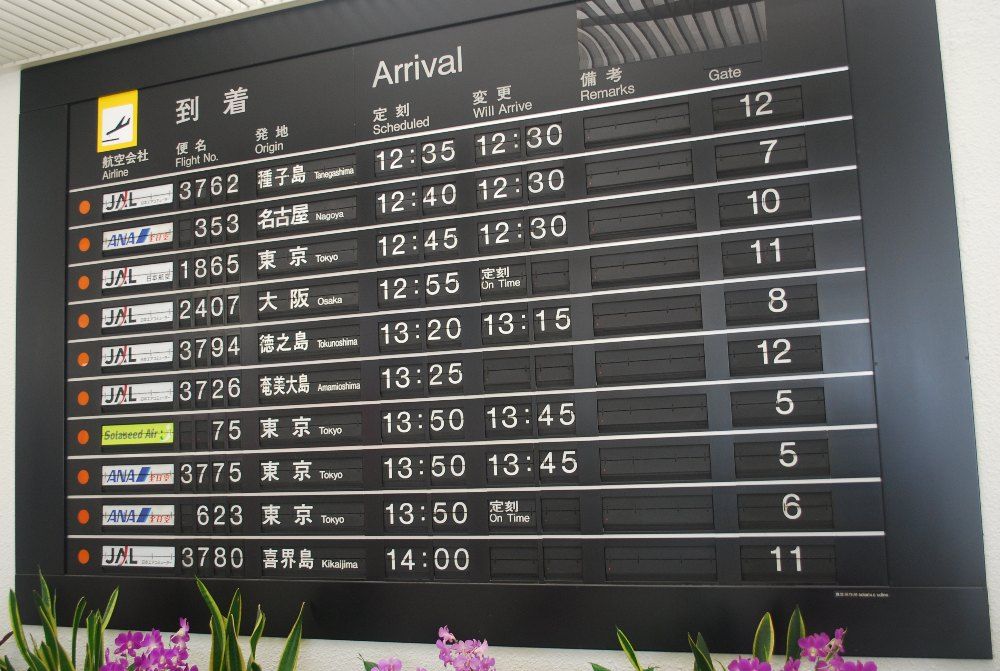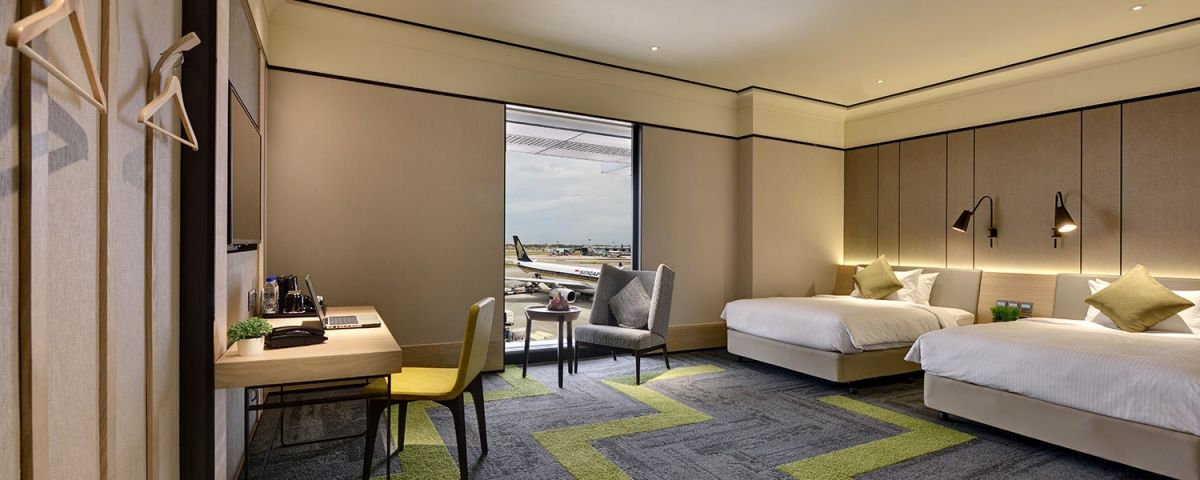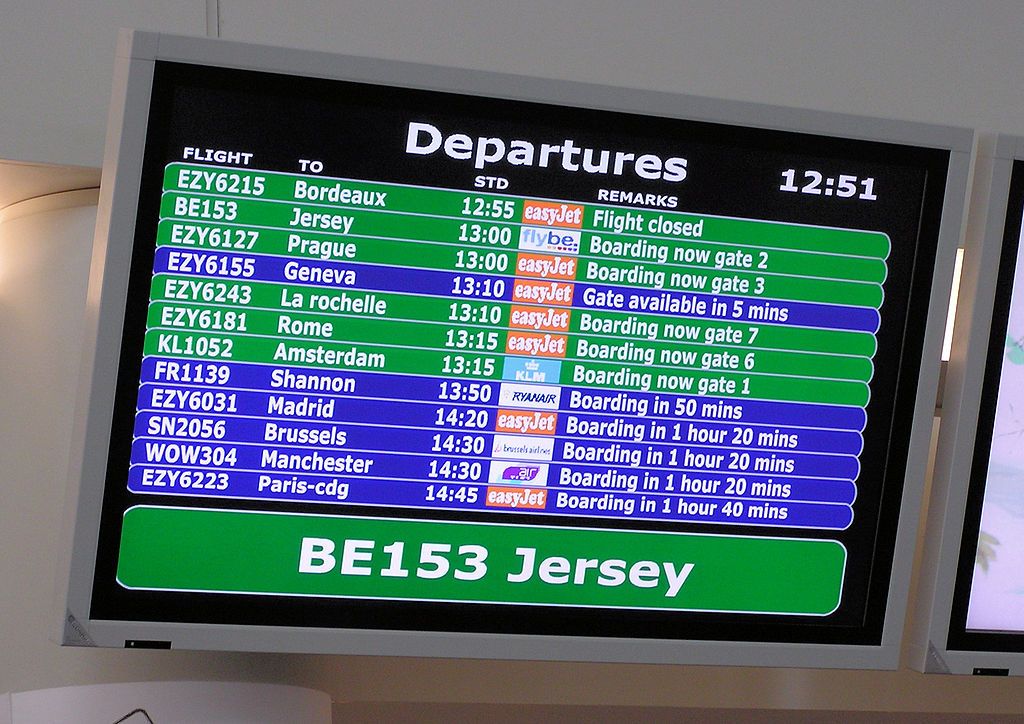Summary
- The split-flap display, also known as Solari boards, was once an iconic feature of airports.
- Solari boards were able to display alphanumeric graphics and were widely used in airports and railway stations.
- While Solari boards are no longer commonly used in airports, they still exist in nostalgic spaces such as airport hotels and other hospitality venues.
Do you remember the iconic split-flap display screens from the past? Before the digital era, all major airports featured large display screens showing flight status. The sights and sounds of the flapping mechanism were what made the airport experience so exciting.
While the old display boards have been replaced by newer digital LED displays, their legacy lives on for millions of travelers who began their air journeys in the early days. This article takes a trip down memory lane, exploring one of the coolest features of commercial aviation history.
The story of an airport icon
The typical modern-day airport terminal is fast becoming a monolith of polished stone floors, with copious amounts of glass providing an abundance of light for its users.
However, it was not long ago that terminals echoed with the familiar 'clack-clack-clack' sound and the gentle breeze created as cogs whirred, and wheels turned. All the while, hundreds of characters on huge flight information displays would miraculously and regularly re-invent themselves.
The visual spectacle, as numerous lines of flight information transformed themselves as the flights gradually moved up the display would often gather crowds. Many passengers would stand and stare, marveling at this technological masterpiece as it underwent this procedure hundreds if not thousands of times each day. Others would simply obtain the information they required and head on their way.
The split-flap display, otherwise known as a Solari board after its inventor, was once a cornerstone of airport terminals worldwide. Yet, regardless of their technological genius and ability to display vast amounts of information that could be changed every few minutes, such boards have sadly been all but confined to aviation folklore.
What is a split-flap display?
Split-flap displays are electro-mechanical digital display devices that present changeable alphanumeric graphics to convey information in dynamic settings like airports or other transportation hubs. The signs also later developed the capability to display graphics and logos. The device, just like clocks, changed the information it displayed via motors and electrical current.
In split-flap devices, such as early digital clocks, each character or graphic position has a collection of flaps on which the various characters or graphics are printed. These flaps are precisely rotated via internal mechanics to show the desired character or graphic.
Having the ability to display information clearly and change automatically, just like a clock, meant that these devices found a vast array of applications. For example, they were used at railway stations and airport terminals from the 1960s onwards, typically to display departure or arrival information.
The split-flap displays of this era were complex and required specialist knowledge if they required maintenance. When installed, split-flap displays appear sleek and simple. However, over 5 million individual pieces contributed to the display's functionality and sound.
Yet, in an age before LED and digital displays, their ability to constantly refresh the information was invaluable to transport hubs such as airports while also offering the following additional benefits:
- Little or no power consumption while the display remains in a static state.
- High visibility from a wide range of viewing angles in most lighting conditions.
- The aural annunciation created by the distinctive metallic 'clacking' sound draws attention to those nearby as the displayed information is updated.
The early history of the Solari board
The story of these displays goes back to 1725 when the Italian clockmaking company, Solari di Udine, opened for business in a small town in northern Italy. The company specialized in the manufacture of clocks for the towers of churches and other municipal buildings.
In the post-Second World War era and following a long history of successful trading, the family-owned firm (run at this stage by Remigio Solari) collaborated with an Italian designer, Gino Valle. Together they designed a moving sign created initially to display the time to users of railway stations.
These early signs were simple but brilliant, using four flaps, each split horizontally across the middle, containing ten digits. With white numbers set against the black flap backgrounds, the groundbreaking design won the prestigious Compasso D'Oro award in 1956. Later that same year, Solari di Udine sold its first moving sign to Liege railway station in Belgium.
The evolution of an icon
With further collaboration and input from a Belgian inventor, John Meyer, the basic design evolved into the more complex arrangement we are now familiar with, increasing from four to 40 flaps. With this increase in size, along with the enhanced capability to display letters and numbers, the Solari board has been transformed from a simple time-telling device into something with a far greater number of applications.
Thanks to their versatility in such environments, the company has reportedly sold thousands of boards to airports and railway stations worldwide. The company shifted units to many far-flung corners of the world and even to many remote markets, given their international recognition, and their appeal spread across the globe.
Although Solari was not the only manufacturer, and copy-cat manufacturers sprang upon the groundbreaking technology, it's the Italian company that became forever linked to the technology, which, along with companies such as Hoover, Jeep, or Jacuzzi, has become synonymous with its unique design.
Old technology, modern applications
Solari di Udine remains an industry leader in dynamic signage, and still sells products to airports and railway stations. However, the signs are now fully electronic, reducing the maintenance required with the resulting increase in reliability. Sadly, the company that invented the split-flap display no longer markets or sells the products it is most well-known for to airports.
That said, many Solari boards do still exist. Some airports still retain them, albeit in a non-operational state. They're often kept as nostalgia pieces, protected behind glass and retained for historical reasons.
In Australia, for example, there are three working boards in the Qantas first class lounges at Sydney and Melbourne airports. Additionally, there are two retained in the remarkable TWA Hotel located at New York's JFK Airport.
However, you are more likely to find Solari boards away from airports rather than inside them these days. The hospitality industry, in particular, has adopted the iconic retro appearance of the boards. Indeed, Solari di Udine continues to sell its boards to shops, restaurants, museums, and hotels. In recent years, other sectors have also been embracing them as a nod to the sepia-tinted age of nostalgia.
With the introduction of wireless technology, cloud-based applications can assist users in controlling their modern-day split-flap displays with ease. Many of the new displays run on Linux, which means that users can control messaging either manually or autonomously from anywhere in the world. A standard 110-220V power supply is all that is needed for a split-flap display to operate.
A classic example of aviation nostalgia
Although essentially now extinct from airport concourses and arrivals halls, the split-flap display will long be remembered as a key part of the visual experience of air travel. The sight of them and the sounds they created will be retained in the memories of millions of air travelers who came into contact with them over the years.
Those memories conjure up romantic feelings of the anticipation of faraway travel, or reuniting with friends and loved ones from overseas. They provided onlookers with a window into the world, presenting the viewer with a menu of exotic destinations that many could only dream of visiting during their lifetime.
But their simple design, combined with the visual spectacle that they create every time they refresh their displays, is missed by many. You only needed to look up at the Solari board when you heard the distinctive whir as the information changed to get an update on your flight's status, unlike the digital signage of today.
To sum up, there can't be too many individuals these days who would stand in front of a random airport LED screen marveling at its technical and visual ingenuity in the same way that people once did with Solari boards. These devices are an icon of a golden era of air travel that has since been confined to aviation history.
What are your recollections of split-flap airport displays? Do you know of any airports that still use a working Solari board to convey flight information? Let us know in the comments.

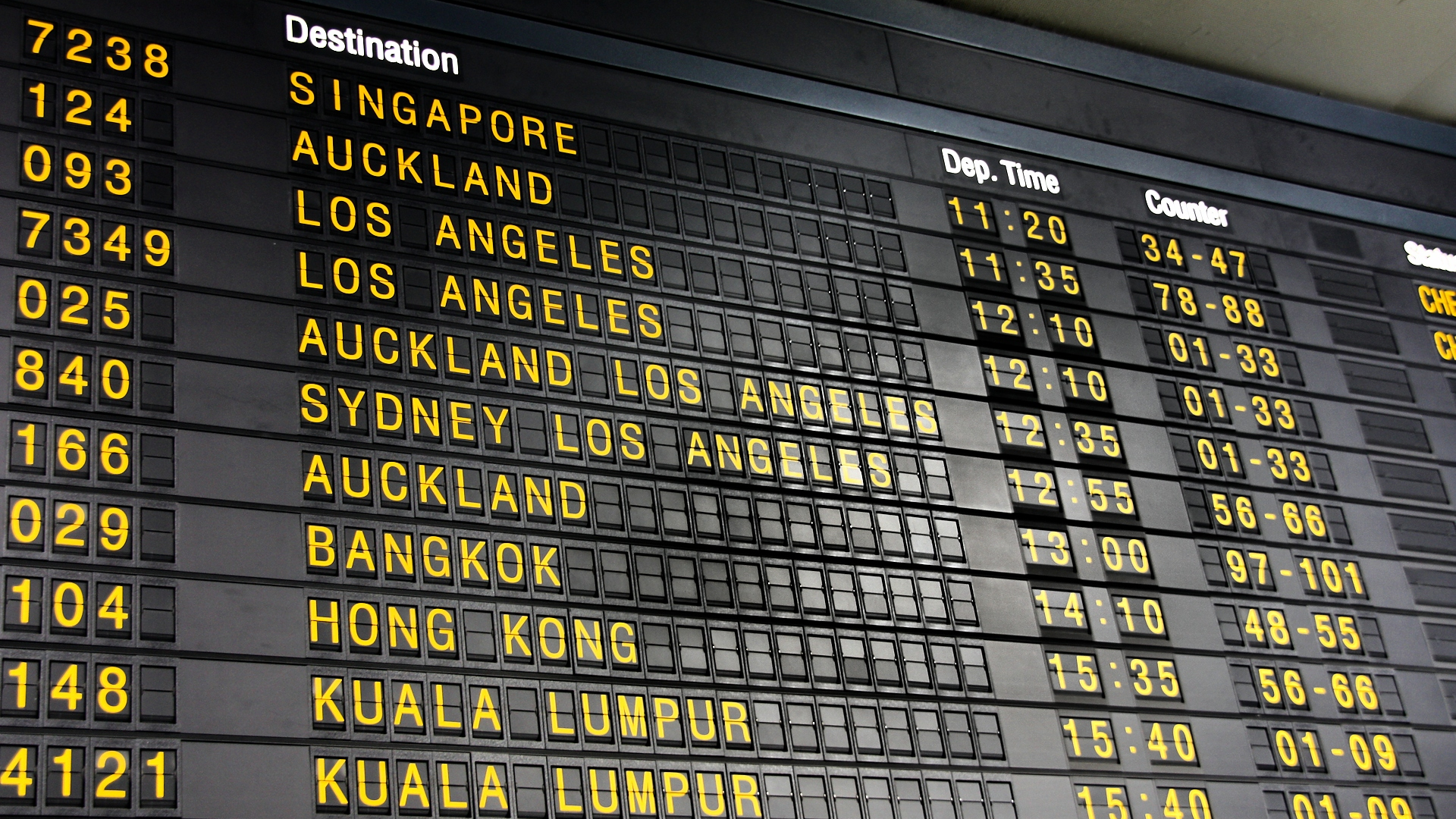
.jpg)
